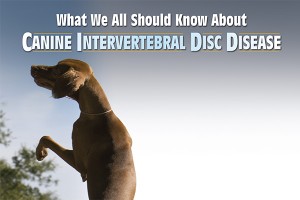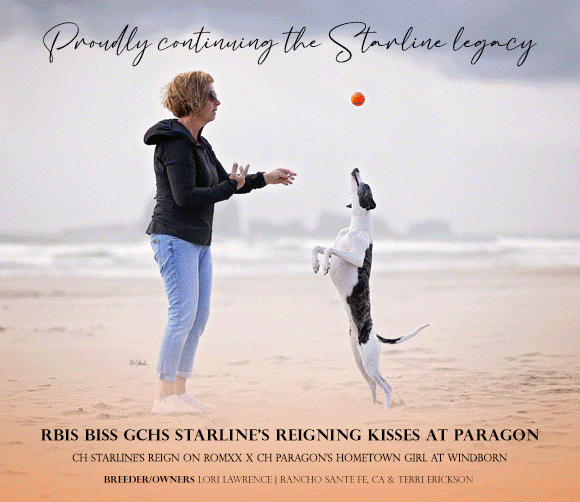What We All Should Know About Canine Intervertebral Disc Disease
Click here to read the complete article
120 – August, 2024
 By William Given
By William Given
Canine Intervertebral Disc Disease may present in dogs, with signs as subtle back or leg pain. With severe cases, the symptoms could be as striking as complete paralysis of the legs.
When we think of a dog’s spine, I believe, most of us think of the bones (vertebrae) that make up the dog’s back bones. Equally important are the intervertebral discs that lie between the vertebrae. It is these discs that allow our dogs to flex, bend and turn, but under normal conditions, a dog’s intervertebral discs function as shock absorbers between the vertebral (bones) in the neck and back.
The intervertebral discs consist of a cartilaginous endplate anterior (front) and posterior (back) sides that rest against the bony vertebrae. In between the end plates is a band of fibrous connective tissue that surrounds a soft, squooshy (toothpaste consistency) area called the nucleus pulposus.
Try to picture a jelly-filled donut standing on its side. Here, the nucleus pulposus is the jelly and the dough is the fibrous band of connective tissue. It is the nucleus pulposus (or jelly) that works to receive and distribute the bulk of the shock absorbing work load.
Hansen Type I
Canine Intervertebral Disc Disease commonly occurs in small breeds including Dachshunds and Pekingese as well as Lhasa Apsos and Shih Tzus. Dachshunds (standards and miniatures) have a 10-12 times high risk factor for developing Type I CIVDD than all other breeds combined. It most often occurs in dogs between three and six years of age, however, it can occur in any dog and at any age.
When the nucleus pulposus experiences premature dehydration or a mineralization that significantly alters the jelly-like properties and negatively impacts the ability of the nucleus pulposus to perform its shock absorbing duty, the result is Hansen Type I. This type of change can cause a rupture of the nucleus pulposus through the band-like annulus fibrosis surrounding it, resulting in an extrusion (outward flow) into the spinal cord. This extrusion can happen abruptly and traumatically or it may occur more slowly over a period of hours or even days. The result is painful and debilitating pressure against the spinal cord.
The most common clinical sign is pain when Type I CIVDD occurs in the cervical portion of the spine. When the disc extrusion occurs in the last part of the thoracic spine or in the lumbar spine, pain is still often observed, but can also be accompanied by significant neurological changes as well. This may also include changes such as stumbling, weakness, an inability to walk or a loss of sensation. These changes may develop gradually or occur suddenly depending on how quickly the extrusion ensues and frequently necessitates a trip to the veterinarian. The severity of symptoms usually varies depending on the degree of disc extrusion.
Hansen Type II
Click here to read the complete article
120 – August, 2024

Short URL: https://caninechronicle.com/?p=301650
Comments are closed











